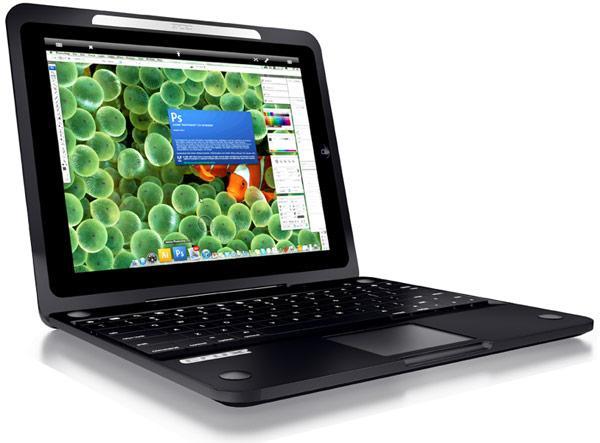The relatively new tablet trend has finally taken off. Several serious Android tablets are now available and a mess of them are just around the corner, coming in all sorts of shapes, sizes and forms. One has even come closely resembling a netbook instead of the usual slab design, the ASUS Eee Pad Transformer. This particular tablet seems to have caught the attention of everyone interested in the tablet space – especially those looking not only to enjoy their mountains of media on the go, but those looking to actually get some work done, too. Selling out in mere minutes after launching online, the Transformer is still impossible for retailers to keep in stock, even a month after its US release and ASUS upping production.
Although it has caught the eye of buyers and users all around, this design isn't necessarily new. This was the original form of the tablet. You know, the Windows tablets that were slow, clunky, and had resistive touchscreens? Fortunately, we no longer have to endure the pain of resistive touchscreens or full operating systems on tablets.
Seeing that Android tablets have just recently started popping up left and right, the iPad has had a stranglehold on the tablet market for some time now. But the fact that Android tablets are being made by a multitude of manufacturers and coming in various form factors, Android tablets have a certain edge on the growing market. That said, the iPad – being an Apple product – has an edge of its own: accessories and attachments.
The iPad has been around for just over a year and the cries for a keyboard option have been far and wide. Accessory manufacturers like ZAGG and Kensington have given it a shot and came up with some pretty decent add-ons to help get some work done form the media-centric tablet.
I have a ZAGGmate for my iPad and I absolutely love it. In fact, I rarely use the iPad without it; they feel as if they belong together. The ZAGGmate makes the iPad itself several times more functional. I also have to admit, however, that it has its limitations: not being physically attached (the iPad just sits in it), durability (mine took some pretty heavy damage during one small fall), and not having a touchpad or mouse option. You can imagine that switching between keyboard and touchscreen controls can be a bit confusing and frustrating at times.

That's where the Crux Loaded case for iPad comes in. With a built-in battery that also gives the iPad an extra 7.5 hour boost, a working touchpad, and connecting the two devices to make them one, it arguably puts the iPad on par with the ASUS Transformer. (Note: this picture is misleading, the iPad has not been hacked to run OS X. This is a remote desktop app.) But for a whopping $250 (versus the ASUS keyboard dock for $150), is this good enough to compete with the tight-knit integration and remarkably low price of the ASUS option?
The answer is, it doesn't matter because if the Loaded case doesn't, some other option will. Apple's products have always been strongly backed by an impressive amount of third-party accessory manufacturers. For instance, the ZAGGmate was one of the first Bluetooth keyboard options made specifically for the iPad. It will set you back roughly $100 and not everyone can see eye to eye with that price tag. Thus another reputable case manufacturer comes in, makes their own Bluetooth keyboard option and undercuts ZAGG by $20 or $40, making the keyboard an must-have accessory.
The point is, people are going to believe that because Android has multiple manufacturers creating tablets in varying form factors, that they will undoubtedly control the market. Or that the different form factors give Android tablets more variety and functionality. However, Apple is releasing one new tablet per year, which are unimaginably popular. This makes case manufacturers pounce on Apple's devices. The perpetual availability of cases and add-ons for the iPad make it just a functional and give it almost as much variety as its Android counterparts, believe it or not.
Image via Engadget